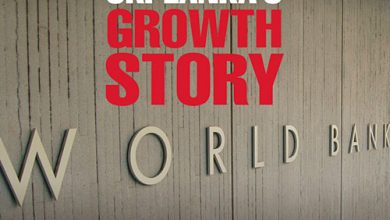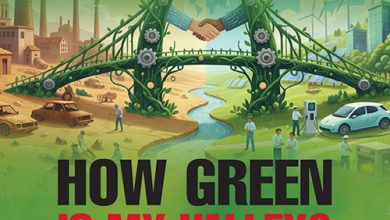SUSTAINABILITY PROJECTS
TURNING IDEAS INTO PROJECTS
Meeting corporate aims through sustainability projects – Kiran Dhanapala
Projects are vehicles for implementing corporate sustainability whereby they’re developed in the context of a relevant strategy, plan and management system. A policy sets out the vision, and a plan indicates where you’re going and how to get there over a long-term horizon.
This in turn provides an overarching rationale for a project, which is how you address specific organisational impacts and sustainability goals. It takes many projects to achieve a vision with each contributing something specific.
Therefore, projects are firmly rooted in the business case and rationale for organisational sustainability. This includes taking note of the operating context of the organisation including the relevant sector or country. Identify needs that can address both the organisational business case and Sri Lanka’s priorities in achieving relevant Sustainable Development Goals (SDGs) as that would be a winning combination!
This prevents organisations from implementing sustainability in an ad hoc manner or with a ‘project to project’ approach. Instead, projects could contribute to the well integrated sustainability initiatives of an organisation.
Other benefits of having a system include an overarching framework that is proactive and not reactive, being able to transfer the benefits of lessons learnt from one project to another, an integrated business approach, the ability to involve all employees in sustainability and regular budget allocations for sustainability initiatives.
An organisation’s sustainability management system enables the management of projects and processes – viz. plan, do, check and review. A project plan must include a description of the organisation’s key goals and strategies, and how it contributes to them through the project, which in turn contributes to a future sustainable organisational state that’s been mapped out. It will add value without adding impact.
How you undertake projects is determined by where your organisation stands in terms of its sustainability journey.
For those starting out, the approach is limited to pilot phases – they may use parts of systems to support individual projects (e.g. plan, do, measure and monitor results; and review for improvements for the next project). This implies piggybacking on potential projects vis-à-vis environment, health and safety (EHS); total quality management; diversity programmes; or lean manufacturing, which helps expedite a sustainability agenda amid ongoing efforts.
As you enter the initiative level, a system to manage processes (develop a planning process, create criteria for project selection, train for broader understanding etc.) will ensue. Finally at the integration level, the organisation incorporates the process into its core business system – for instance, project planning as part of the regular annual budget planning process, and sustainability training in human resource and training programmes.
Ideas for a sustainability project can evolve from a key impact area that is analysed and prioritised for the organisation, and depending on where it stands in terms of its sustainability journey.
Start with cleanup activities, cost savings and efficiencies – or doing old things in a new way. When you start to realise gains for the business, it’s time to become more strategic: look to innovations or do new things in new ways. Eventually, you must address tough questions and transformation through new business models. This includes a shift to circularity, which is more challenging but prevails globally.
Be clear on what your project will achieve and to whom it will cater. Which stakeholders are included and who needs to be consulted? Who benefits? What is the baseline for those who benefit before the project commences?
Convincingly demonstrate that the project realises a benefit.
It is vital to gather evidence to corroborate the project’s progress towards corporate sustainability. Moreover, it would be crucial to gather baseline data on the situation immediately before the project begins. This is often overlooked but essential to attributing any changes to the project.
It’s also imperative to monitor project progress in an objective manner. Robust information must be as quantitative as possible with real-time data set up in such a way as to enable mid-project corrections and refinement.
What you should track – sustainability metrics – will be determined by what’s relevant to your industry and stakeholders (i.e. materiality). Limit it to five or 10 aspects. Build on existing data collection by including others. Share findings and conclusions that may help refine measures over time.
Obtain external feedback in the form of independent evaluations or project certifications. Document lessons learned including mistakes that were corrected. This adds credibility and transparency; and it also demonstrates an aptitude for learning and innovation for
later use.
Finally, what is your exit strategy for the project? What’s next in terms of what the project has achieved? Are lessons learnt being used elsewhere? Is an aspect of or the entire project being scaled up or handed over to collaborators?
Being clear on what you do at the end of the project is the result of clear thinking at the beginning.
So let’s get those ideas into projects!







